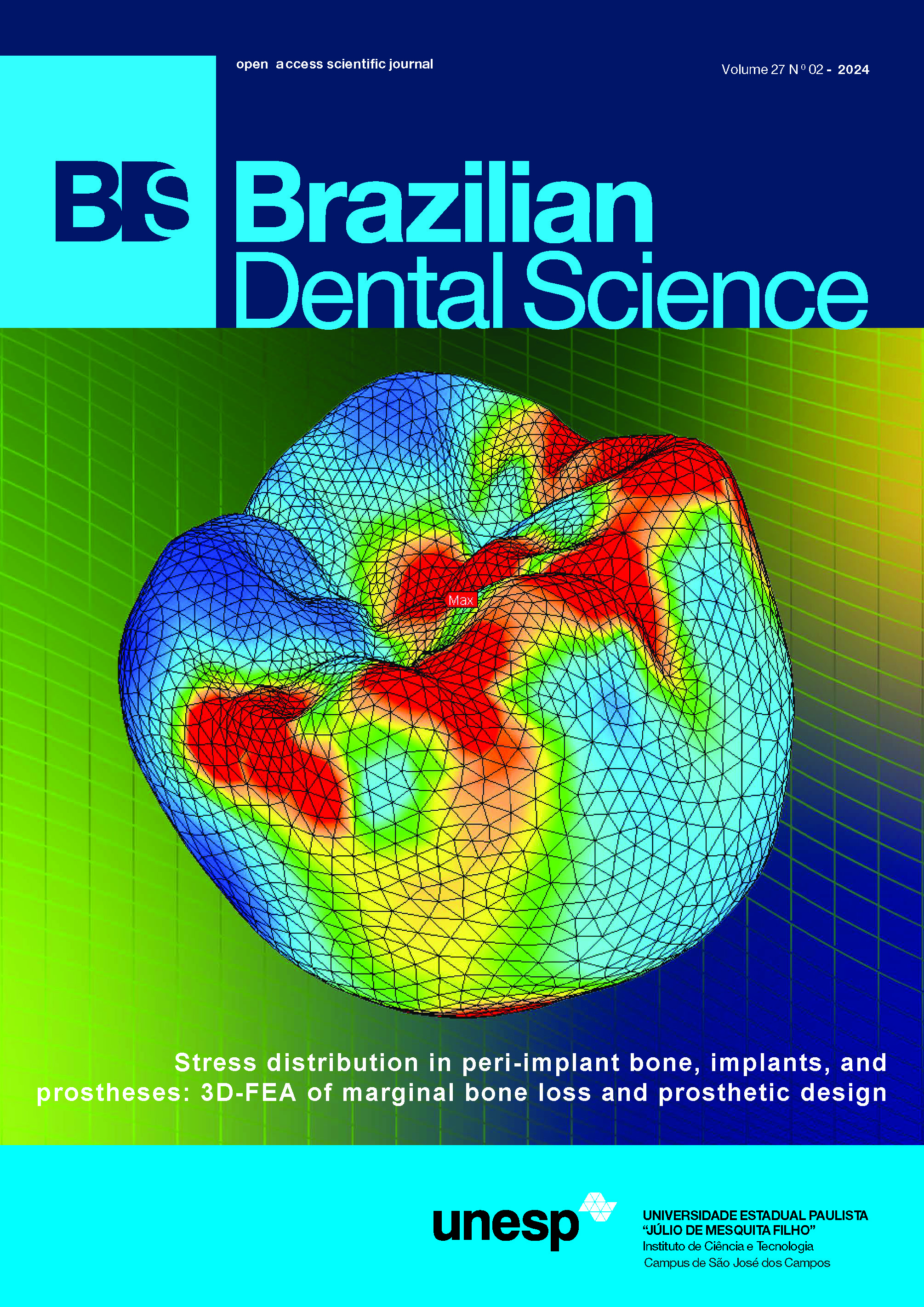Effect of loading protocol on peri-implant marginal bone loss: randomized clinical trial
Loading protocol in peri-implant
DOI:
https://doi.org/10.4322/bds.2024.e4186Abstract
Objective: This clinical study was conducted to evaluate the effect of loading protocol using hybrid ceramic resinous material on marginal bone loss. Material and Methods: This study was conducted in the fixed prosthodontics department, at Ain Shams University on 30 titanium endosseous tapered threaded implants which were placed in 30 patients in the upper premolar area. Patients were divided randomly according to the loading protocol into 3 groups (10 patients each): Group I (IFLV): patients received CAD/CAM polymer infiltrated ceramic (VITA-ENAMIC) crowns (immediate functional loading), Group II (IFLP): patients received CAD/CAM PMMA crowns (in occlusion for 3 months) followed by CAD/CAM polymer infiltrated ceramic (VITA-ENAMIC) crowns (functional loading), and Group III (INFLP): patients received CAD/CAM PMMA crowns (out of occlusion for 3 months) followed by CAD/CAM VITA-ENAMIC crowns (functional loading). Results: After three months; the highest value of marginal bone loss (mm) was found in IFLV, followed by IFLP, while the lowest value was found in INFLP. After six months, the highest value was found in IFLP, followed by IFLV, while the lowest value was found in INFLP. Also, after twelve months, the highest value was found in IFLV, followed by IFLP, while the lowest value was found in INFLP. Marginal bone loss values were within the accepted values for clinical success for all the tested groups. Conclusion: Immediate non-functional loading provided more acceptable outcomes than immediate functional loading. Also, immediately functional and non-functional implant loading using hybrid ceramic as permanent material has shown promising results with proper patient selection.
KEYWORDS
Bone loss; CAD/CAM; Ceramic; Hybrid; Loading.
Downloads
Published
How to Cite
Issue
Section
License
Brazilian Dental Science uses the Creative Commons (CC-BY 4.0) license, thus preserving the integrity of articles in an open access environment. The journal allows the author to retain publishing rights without restrictions.
=================




























